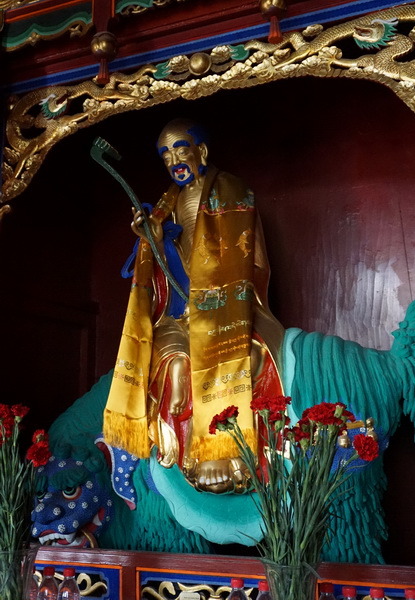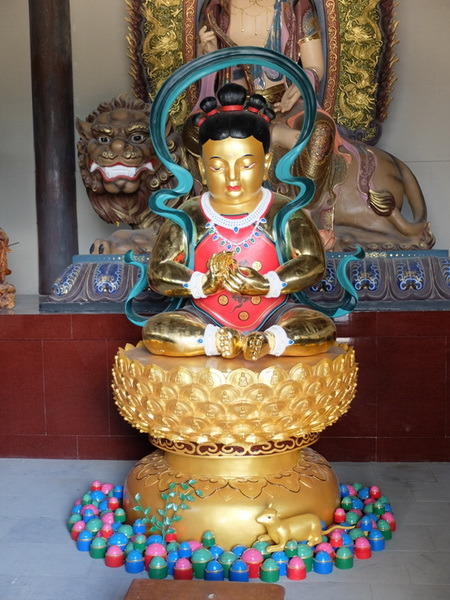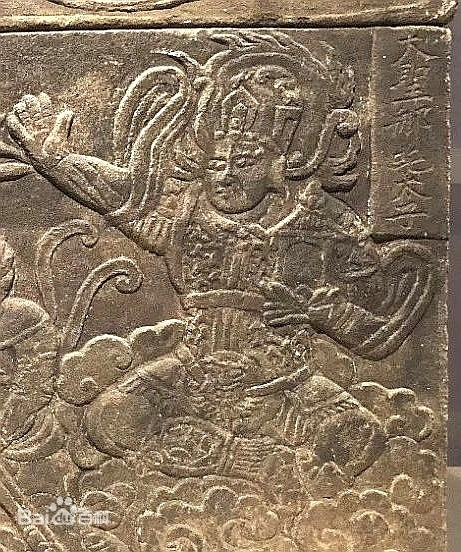Curate, connect, and discover
As A Member Of Chinese General Public Who’s Not Specifically Into 封神榜 And Related - Blog Posts
Me, staring at the "Nezha is eternally 12/Nezha is often depicted as a kid so he's just a kid and nothing else" crowd: man, have you heard of Child Manjushri a.k.a. Wenshu Tongzi
(This is totally not an excuse for me to find cool statue pictures and talk iconography)
So, here is Bodhisattva Manjushri in his standard "graceful aristocratic prince" form, riding his azure lion. The statue in the picture doesn't have it, but oftentimes, he'll also be holding a flaming sword that symbolizes wisdom's ability to cut through ignorance and delusions.

This is "Holy Old Monk Manjushri", a variant that I came across a few times while temple-touring, but couldn't find many good online pictures of. It seemed like a thing that was popular around Mt. Wutai, based on the "Buddha-palita met Old Man Manjushri" tale. Sometimes his BFF Samantabhadra is depicted as an old man too, for matching purposes.

And this is Child Manjushri, with his five hair buns, often worshipped in an esoteric context. On Mt. Wutai, there are five major temples atop five peaks, each worshipping a different form of Manjushri, and the "middle peak" temple has a Child Manjushri in their main hall. Like, it's far from the most common variant, but neither is it this super obscure form that no longer enjoys active worship.

Lastly, just for fun: this is Yamantaka, a guardian deity/Wisdom King, who, in Tibetan Buddhism, is believed to be Manjushri's wrathful form.

If you wouldn't call Manjushri "the eternal child Bodhisattva" just because he has a child form, why would you say Nezha is an eternal child when he, too, has both child and adult forms?

Even though Nezha's child form is vastly more popular and well-known than Child Manjushri, I think my point still stands: A deity is capable of having multiple manifestations, of varying ages and appearances, each fulfilling a particular function and niche——none of which is the "One True Form TM", just different clothes they wear based on occasions and audiences.
To stretch the analogy a little, Manjushri's child form is the formal dress he puts on before attending a religious event, while Nezha's child form is the lotus T-shirt he wears a lot while appearing on TV, to the point it becomes his most iconic attire.
This doesn't mean he only has a single shirt, for goodness sake, and using his child form as evidence for the "eternal child" claim is like saying Nezha's only allowed to wear that one shirt and nothing else.